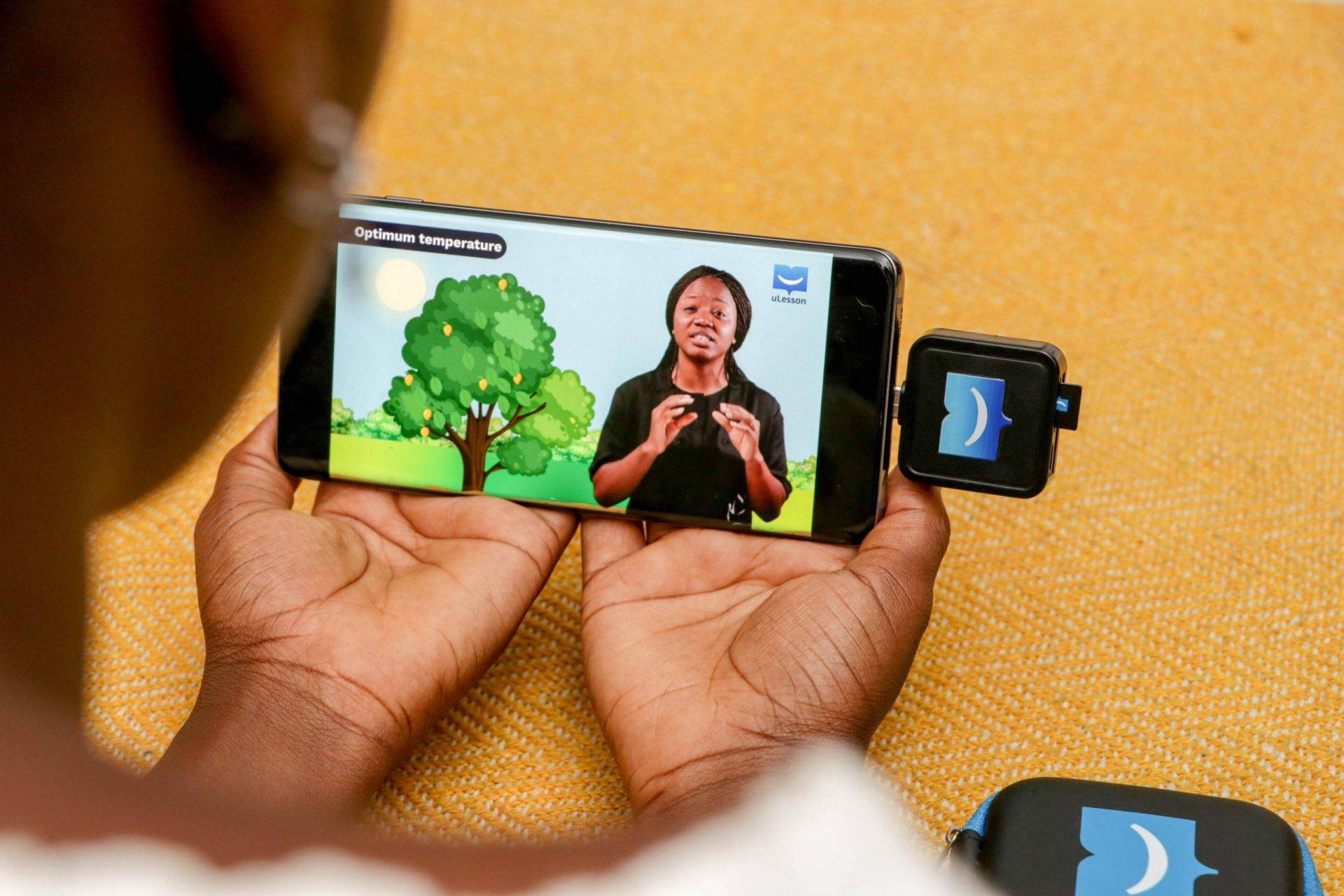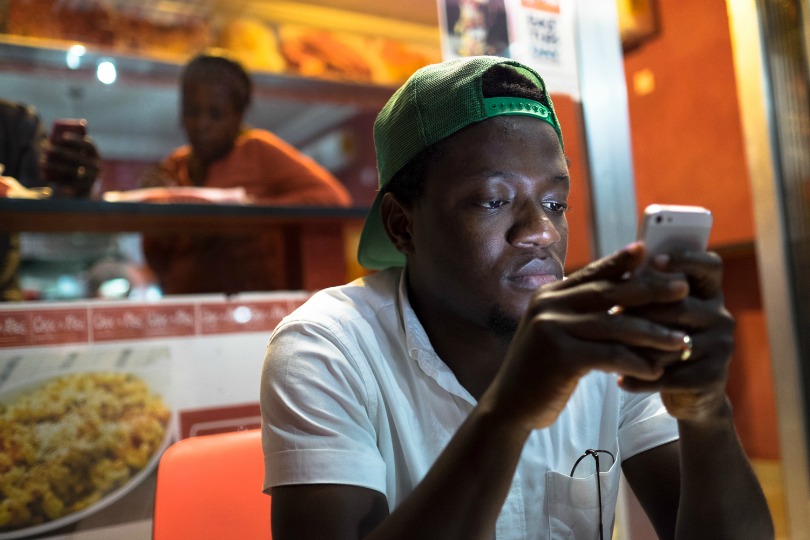Internet Connectivity Is Not The Biggest Barrier To E-Learning In Africa

Late September, Cape Town-based edtech startup Snapplify made quite some headlines for landing USD 2 Mn in capital. The funding which was hurled in from a group of investors, including S.A’s VC firm Knife Capital, was said to enable the firm expand its e-learning services globally.
Africa’s largest eBook aggregator, Snapplify offers over 350,000 digital copies from more than 250 publishers. With the coronavirus pandemic giving edtech an impromptu litmus test, it’s important to see whether or not connectivity best affects e-learning.
Snapplify’s flagship product Snappbox, a hardware distribution solution which very much symbolizes the edtech itself, allows schools with limited or no internet connection to access learning materials.
The goal is to save data and download time. If what is supposedly the continent’s best-known e-learning enterprise is so concerned about access to the web, then it might make sense to assume that the biggest challenge to e-learning in Africa is poor internet connection.
But It’s Not
Due to the planned installation of marine telecommunication cables, the potential to better internet connectivity in Africa has significantly climbed up the ladder in the last few years. Despite the low speed, Africa has the third-largest number of internet users in the world.
In June 2019, more people in the continent accessed the internet than the ones in Latin America, North America or the Middle East. There were 525 million users in Africa, 447 million in Latin America and the Carribean, 328 million in North America and 174 million in the Middle East.
With such numbers, it is seemingly safe to assume that e-learning should be thriving by now. It is storied that the challenge of countries like land-locked Chad and hard-to-do-business Eritrea where the demand for internet services is limited is delivering the last mile connectivity to homes for a reasonable cost – and it’s true.
It is also said that bandwidth in many African countries are not capable of carrying files such as compressed videos to give people access to a wide variety of educational materials. In these cases, the governments are blamed and private enterprises receive a clarion call to intervene.
E-learning is slowly metamorphosing in Africa. Granted. But if there was an instance where it was as a result of lack of internet access, that time is long gone. It may yet be one of the many challenges, but it is far from the most significant. Internet penetration is likely to grow at a faster rate than anywhere else on the planet.
More than half a billion users bring about the possibility of a greater number of immense, social, and economic changes. More so, internet usage could very well be symbolic of a once sleeping African giant now doing morning stretches.
Wesley Lynch, Founder and CEO Snapplify, told WeeTracker that the lack of internet connectivity in Africa is a problem for e-learning, but a rather overstated one as lots can be done even with limited internet.
“The lack of Internet connectivity is a challenge to widespread adoption of e-learning in Africa. Having reliable fast internet would certainly help and allow the roll out conventional e-learning platforms. In Africa, though, we need to be creative and hybrid solutions that function offline or offer limited functionality while in offline mode. Doing so will allow us to leverage limited connectivity more effectively,” Wesley said.
About Poverty
Dominic Dominic, co-founder of Akiddie, a Nigerian e-learning enterprise that tells popular children’s stories in their native dialect, says that the biggest barrier to edtech services in the continent is poverty rather than internet connectivity.
In his opinion, the reason internet access is expensive in Africa is not technological, but for the fact that the market is not big enough to justify the huge investments in competition. Hence, the few service providers that come here can get away with poor service and high prices.
“If more people earned a lot more disposable income in Nigeria or Africa, it would result in a bigger market for internet services (due to them being able to afford things like smartphones and internet).
A larger market would justify more investment in internet infrastructure (increasing quality) and attract more internet service providers (increased competition, reduced cost, like the case in India). But one thing we mustn’t miss though is that the people who’re already in the market where we can market e-learning, is already a sizeable population in Africa,” Dominic told WeeTracker.
“Then in Nigeria, inefficient systems like poor power jacks up the cost of service delivery. I think the internet is just a symptom of deeper causes. If we gave everyone free internet, they won’t automatically afford e-learning, “ Dominic adds.
Indeed, poverty is a worry in Africa. The average rate for Sub-Saharan Africa stands around 41 percent. What’s more, among the 28 poorest countries in the world, Sub-Saharan Africa plays host to 27, with a poverty rate above 30 percent.
Perception In Consideration

More potent than the lack of internet access, another problem faced by e-learning-enabling startups in Africa is perception. Most parents – and even teachers – for example, believe that hardcopy books are better for children. In the same way, adults would rather buy one title off a bookshelf than download a copy on their smartphones or computers.
As supported by a World Bank survey in Textbooks and School Library Provision in Secondary Education in Sub-Saharan Africa, the textbooks provided for African students are not sufficient, and what’s available comes at a price many cannot afford.
The report which reviewed 19 African countries revealed that there is little or no proof of any systematic approach to, or in consideration of the full range of secondary textbook reduction strategies. “Only 1 out of 19 countries studied (Botswana) had adequate textbook provision at close to a 1:1 ratio for all subjects and all grades.”
Edna Michael-Omoregbee, Principal and Director of Academics of Standard Schools, a flagship of 26-year-old Standard Organization, told WeeTracker that getting textbooks for students to use is one of the many problems that slow resumption and disturbs the students’ learning curve.
Edna, who has degrees in Education from the University of Benin, said: “Due to the low means income and a mild lack of exposure to what education entails, parents are sometimes reluctant to buy rather pricey textbooks for their children or wards. However, when we do have willing parents, there are hurdles to getting adequate supply original copies, being that piracy is still at large,” she pointed out.
“We, nevertheless, encourage our teachers to share ebooks with the students where available and relevant, but not to always substitute for hard copies. Some parents want to see what they are paying for and using e-books may not be the organization’s may not be in everyone’s best interest. So, we stick to the old ways mainly for now, and hope that things will change in the years to come,” she concluded.
The co-founder of Akiddie says the organization holds no misgivings or resentment towards hardcopy books. The e-learning business which solves the problems of identity, ownership, values, and accessibility, reckons that hard copies are incapable of the kind of innovation it intends to pioneer. “Plus, we believe that a more comprehensive education of children that Akiddie can deliver via its platforms should be prioritized over the aesthetics of reading hardcopy books,” Dominic said.
Akiddie is providing convenience, among other cores, in e-learning. “With just a click of a button, you’d have access to over 30 stories in 4 languages, both text and audio, covering a multiplicity of themes in your palm. You don’t have to go to bookshops to find quality reading materials, you don’t have to worry about the stories your girls are reading telling them that they are helpless princesses that have to wait for Prince Charming for redemption.
We provide premium quality reading material for African children. Soon, we would be able to provide quality 3D animated entertainment and immersive storytelling experiences use VR and AR”.
For Wesley, the perception level in the continent is not unique. “Integration of technology in teaching and learning is tough. In Africa and other developing countries, it’s even tougher. Infrastructure is obviously a challenge but often projects struggle with the same change management issues seen in developed markets. Despite these markets being very different, there are definitely lessons to be learned,” he concluded.
Cash For The E-learning Revolution
Since the launch of the behemoth of stories in January 2019 and developing 22 stories to date, Dominic alongside Kachi Nwani are now faced with another problem – funding for Akiddie. The company told WeeTracker that they are no different from the many Nigerian startups who struggle to obtain venture capital consideration.
“In the US, you can get funding for your business with just an idea. But here, getting access to capital is very difficult, especially if you’re just two final year students working on a social enterprise you’re passionate about without a lot of industry contacts in the finance sector”.
One does not need spell work to see the reason e-learning has become the solution for increased dropout rates, low STEM participation and a general lack of post-secondary education in the continent. Provided students have an internet-ready device, they can take part in programs across international borders, be it a fundamental math class or obtaining an exclusive degree.
Self-paced e-learning solutions have the bigger promise for African application. Nevertheless, the area suffers a high rate of withdrawal, which means there’s work to be done to make sure the e-learning process is completed by students.
But to make all of this possible, funding is necessary. According to a 2019 Research and Markets Report, the e-learning market in Africa achieved a value of USD 792 Mn in 2018 and exhibited a CAGR of around 14 percent from 2011 to 2018.
According to the study, the market is expected to reach a value of USD 1.8 Bn by 2024. On a regional basis, South Africa, Morocco, Nigeria, Tunisia, and Kenya emerge as countries where e-learning is gaining prominence rapidly. South Africa represents the largest region, accounting for nearly one-fourth of the African market.
In what is effective, the numbers for Africa are the highest e-learning growth rate in the world. From rehabbed post-secondary attendance rate better-educated to healthcare workers, e-learning has the power to break down some of the barriers that have prevented the continent access to high-quality education in years past. If the concerned startups are able to land funding, well, internet connection will be the least of their worries.